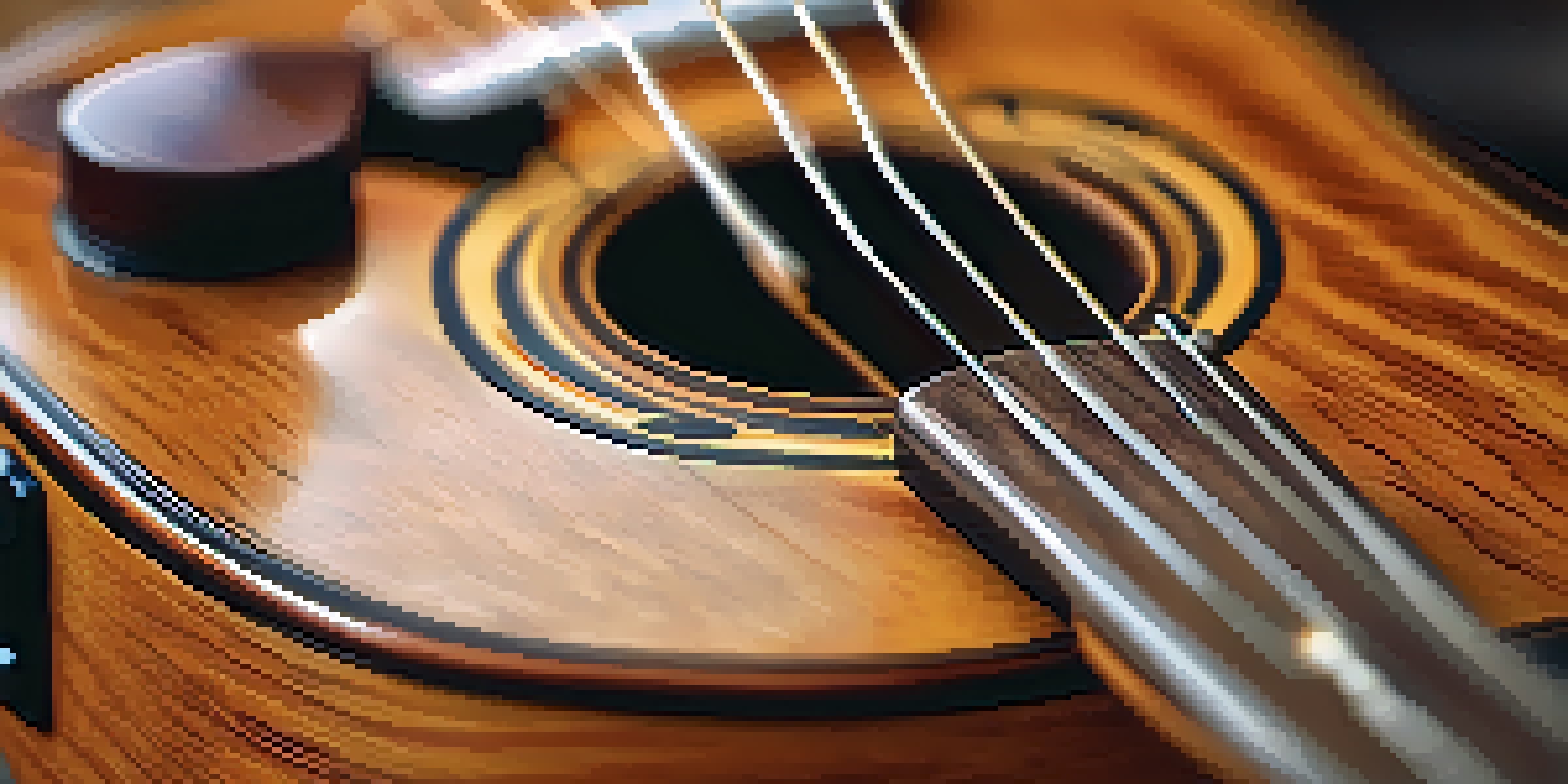An Overview of Ukulele Anatomy: Understanding Each Component

Introduction to Ukulele Anatomy: A Brief Overview
The ukulele is a charming instrument that brings joy to many musicians. Its unique sound and portability make it a favorite for both beginners and seasoned players alike. Understanding the anatomy of a ukulele is crucial for anyone looking to make the most of their musical journey. Let's dive into the various components that make up this delightful instrument.
The Body: The Heart of the Ukulele
The body of the ukulele is its main structure and plays a vital role in sound production. Typically made from wood, the body influences the instrument's tone and volume. The design can vary from soprano to tenor, affecting not just sound but also playability. A well-crafted body can enhance the overall musical experience, making it a key focus for musicians.
Understanding Ukulele Anatomy
Familiarizing yourself with the ukulele's anatomy enhances your playing experience and helps in making informed choices regarding the instrument.
The Neck: Guiding Your Fingers
The neck of the ukulele connects the body to the headstock and is where players press down on the strings. It's generally made of a sturdy wood that provides stability and support. The fretboard, which is mounted on the neck, is marked with metal frets that help guide finger placement for different notes. Understanding the neck's anatomy can significantly improve your playing technique.
The Headstock: Tuning and Control
The headstock is located at the top of the ukulele and houses the tuning pegs. These pegs are essential for adjusting the tension of the strings, allowing musicians to tune their instrument accurately. A well-designed headstock ensures that the strings remain in tune, which is crucial for performance. Knowing how to adjust and maintain the headstock can lead to better sound quality.
The Role of Each Component
Each part of the ukulele, from the body to the strings, plays a vital role in sound production and affects overall playability.
Strings: The Voice of the Ukulele
The strings of a ukulele are what produce sound when strummed or plucked. Typically made from nylon or fluorocarbon, the choice of string material can greatly affect tone and playability. Most ukuleles have four strings, tuned to G-C-E-A, which gives it its distinctive sound. Understanding string types and their effects can help players choose the right ones for their style.
The Bridge: Connecting Sound and Structure
The bridge is an integral part of the ukulele, acting as the connection point for the strings to the body. It transfers vibrations from the strings to the body, amplifying the sound produced. Made from wood or synthetic materials, the bridge plays a role in the instrument's overall tone. A well-constructed bridge can enhance sound quality and sustain.
Importance of Maintenance
Regularly adjusting and maintaining the ukulele's components, such as the headstock and strings, is crucial for achieving optimal sound quality.
The Soundhole: Letting the Music Out
Located on the body of the ukulele, the soundhole is critical for sound projection. It allows sound waves to escape, giving the ukulele its unique resonance. The size and placement of the soundhole can affect the volume and tone of the instrument. Musicians should pay attention to the soundhole, as its design can influence their playing experience.
Conclusion: Embracing Your Ukulele's Anatomy
Understanding the anatomy of a ukulele is essential for both beginners and experienced players. Each component plays a specific role in producing sound and affects overall playability. By familiarizing yourself with these parts, you can make informed decisions when purchasing or maintaining your instrument. Embrace your ukulele's anatomy, and you'll find yourself playing with greater confidence and joy.